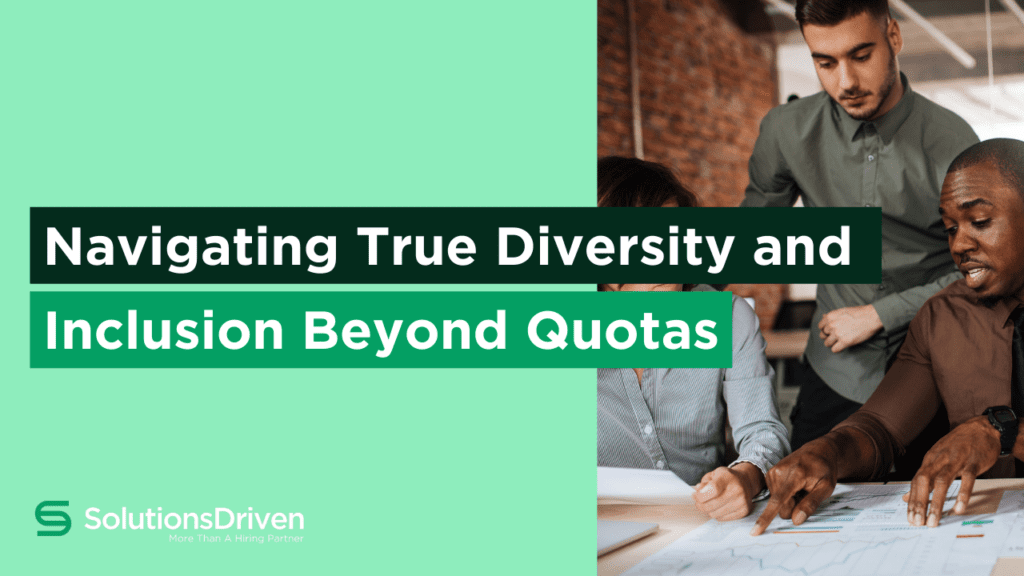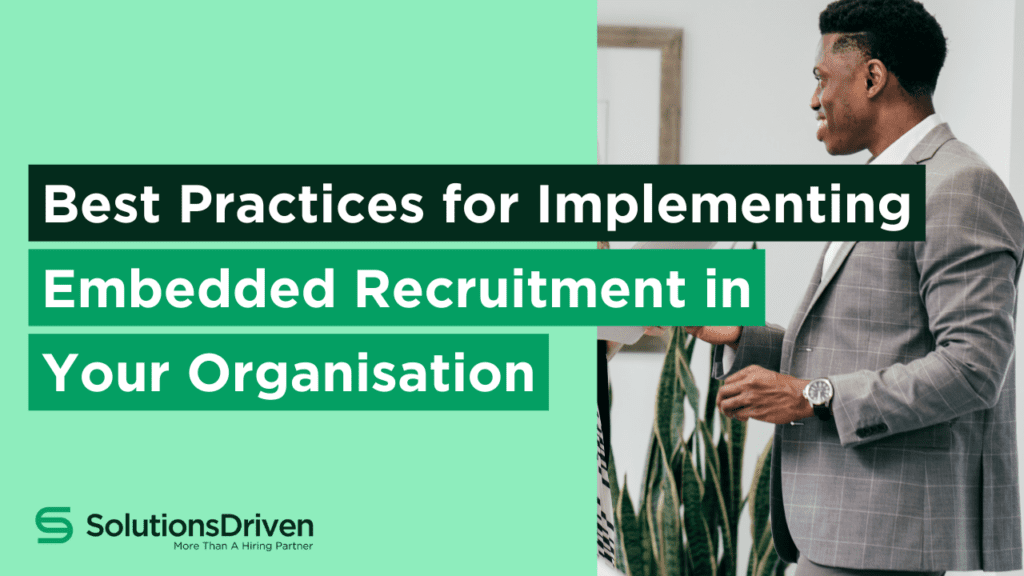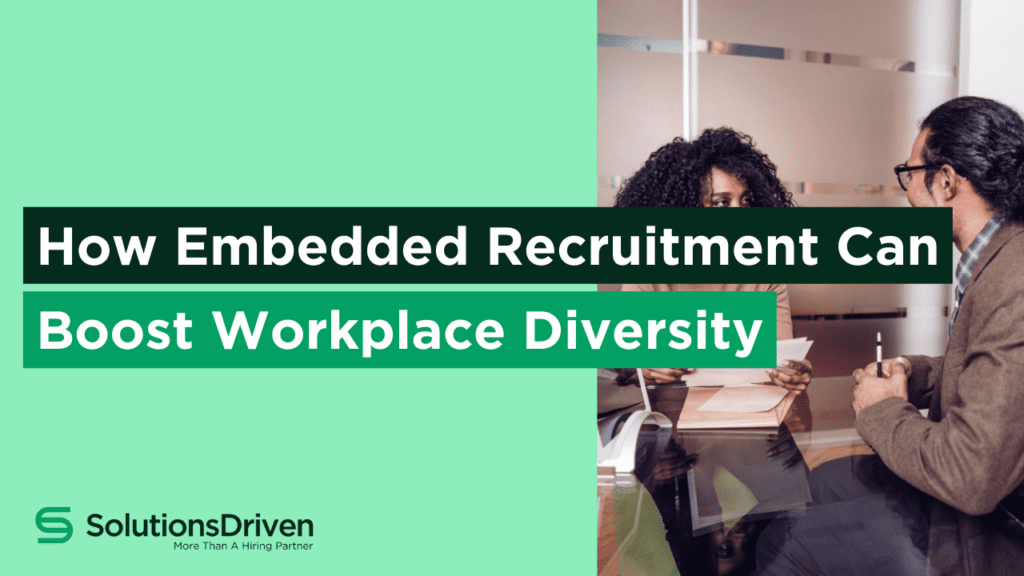To be the first to hear about our latest blogs, whitepaper releases, hiring enablement podcast episodes and get exclusive event invites, join our Exclusive Hiring Enablement Community.
Diversity and inclusion are not just buzzwords. When we talk about diversity, we mean the variety of unique characteristics, experiences, and identities that individuals possess. These can range from ethnicity and gender to socioeconomic status, sexual orientation, or cognitive styles. On the other hand, inclusion isn’t just about having a diverse workforce but also involves creating an environment where all individuals feel valued, and respected, and are able to fully participate and contribute.
Over the years, diversity initiatives have evolved significantly. Initially, they were seen as a method to comply with anti-discrimination laws and avoid lawsuits. However, over time, organisations have recognised the value of diversity in driving innovation, improving decision-making, and enhancing customer relations. Consequently, these initiatives began to focus on attracting a diverse workforce and nurturing an inclusive culture.
While quota-based approaches have been instrumental in increasing representation, they often fall short of achieving true diversity and inclusion. Quotas may ensure numerical diversity, but they don’t necessarily promote an inclusive culture where all voices are heard and valued. They risk reducing diversity to a numbers game, potentially overlooking the importance of individual merit and talent, you can read more about this in our whitepaper ‘Beyond Quotas: Achieving True Diversity And Inclusion Through Thoughtful Hiring Practices‘.
A Thoughtful Hiring Processes
While quota-based strategies have played a critical role in improving representation, there are numerous reasons why they’re not the answer to diversity and inclusion. In fact, they can actually reduce diversity, making it a numbers game, and potentially overlooking individual merit and talent. There’s also the risk of tokenism, where individuals are included only to meet quotas rather than for their unique contributions.
Moving beyond quotas requires a shift towards genuine inclusion. This involves creating a culture that values diversity of thought, encourages participation from all members, and encourages a sense of belonging for everyone. It’s about respecting and valuing the unique contributions that each individual brings, rather than focusing solely on their demographic characteristics.
The future of diversity initiatives? Well, it lies in balancing quantity with quality. While it’s important to have a diverse workforce in terms of numbers, it’s equally crucial to ensure that these individuals can fully participate and contribute to your organisation. This requires a thoughtful approach, one that goes beyond quotas to create a truly inclusive environment.
Recruitment Beyond Quotas
To move beyond quotas and achieve true diversity, organisations need to redefine their recruitment strategies. This involves reaching out to diverse talent pools, maximising inclusive hiring practices, and ensuring that diversity and inclusion are integral parts of the recruitment process.
And that includes inclusive job descriptions, which are crucial for attracting a diverse candidate pool. They should be free from gender-biased language and should clearly communicate a commitment to diversity and inclusion.
Unbiased selection processes are also key to promoting diversity and inclusion. This involves using structured interviews, implementing blind recruitment practices, and providing unconscious bias training to hiring managers.
You can take a deeper dive into this topic by downloading our white paper, Beyond Quotas: Achieving True Diversity and Inclusion through Thoughtful Hiring Practices.
The Role of Leadership
Did you know that your leaders play an instrumental role in setting the tone for diversity and inclusion in your organisation? They can create a culture of inclusion by demonstrating commitment, promoting open dialogue, and modelling inclusive behaviours. Leaders who authentically embrace diversity, equity, and inclusion listen and understand others’ experiences, are those who create a psychologically safe environment.
Leaders shouldn’t just advocate for diversity but also empower others to do so. They’ll align your business values with their inclusion efforts and seek out diverse perspectives, leading to better decision-making. And importantly, they’ll encourage diversity of thought. By empowering leaders as diversity champions in your company, you can create a culture of inclusivity at all levels.
Tips for Building an Inclusive Culture
If, like the companies above, you’re looking to implement your own stand-out diversity and inclusion initiatives, here are our top tips:
1. Set up training and development initiatives
Training and development initiatives play a crucial role in cultivating an inclusive culture as they equip employees with the knowledge and skills needed to understand and appreciate diversity. Effective training should cover topics such as unconscious bias, cultural competence, and inclusive leadership.
2. Create Employee Resource Groups and Affinity Networks
Employee Resource Groups (ERGs) and Affinity Networks can further enhance inclusivity within a business. These groups provide a platform for employees from diverse backgrounds to connect, share experiences, and support each other. They also serve as a valuable resource for the organisation, providing insights into diverse markets and contributing to business strategies.
3. Build a sense of belonging
A sense of belonging is a cornerstone of an inclusive culture. It involves creating an environment where everyone feels valued, respected, and able to bring their authentic selves to work. This can be created through open dialogue, recognition of diverse contributions, and the promotion of inclusive practices.
4. Address unconscious bias
Unconscious bias can be a significant barrier to diversity and inclusion. It’s important for businesses to address this through training, awareness campaigns, and by embedding checks and balances into decision-making processes.
5. Overcome resistance to change
Resistance to change can be another obstacle to inclusivity. Leaders can overcome this by communicating the benefits of diversity and inclusion, leading by example with inclusive behaviours, and engaging all employees in the ongoing change process.
6. Consider how you communicate
Inclusive communication is key to breaking down barriers. It involves using language that respects and acknowledges diversity, actively seeking diverse perspectives, and ensuring that all voices are heard.
The Importance of Continuous Evaluation
Measuring diversity and inclusion is critical for evaluating progress and identifying areas for improvement. This can involve tracking representation across different demographic groups, assessing the inclusivity of the workplace culture, and monitoring the impact of diversity on business outcomes.
Carrying out regular audits and assessments can ensure that your diversity and inclusion efforts remain effective and aligned with your overall strategy and goals. This could involve conducting regular employee surveys, reviewing hiring and promotion practices, and assessing the effectiveness of diversity training programs.
Feedback is crucial for adapting diversity and inclusion strategies. Make sure your organisation is open to feedback from employees, customers, and any other stakeholders. This feedback can provide valuable insights into what’s working well, what needs improvement, and how strategies can be adjusted to better promote diversity and inclusion.
Engaging Employees in the Journey
So, what are the crucial components of a diverse and inclusive working environment? It’s employee feedback and involvement. Asking for feedback can help your company to better understand its employees’ experiences and perspectives. Plus, if you involve them in decision-making processes, you’re likely to promote a sense of ownership and engagement.
But did you know that simply recognising and celebrating diversity is another way to engage employees? Think about hosting cultural events, acknowledging diverse holidays, and celebrating the unique contributions of diverse team members. Such activities not only honour diversity but also encourage learning and appreciation between employees.
Empowering employees to drive the change needed in your business can lead to more successful and sustainable diversity and inclusion efforts. When employees feel empowered, they’re much more likely to take initiative, contribute ideas, and advocate for inclusion.
The journey beyond quotas involves moving from a focus on numbers to a focus on true diversity and inclusion.
However achieving true diversity requires ongoing commitment. There’s no quick fix. It involves not just hiring diverse individuals but also developing an environment where everyone feels valued, included, and able to thrive. By embracing diversity and inclusion, you can benefit from a broader range of perspectives, improved decision-making, and enhanced organisational performance.
Are you ready to improve your hiring processes to ensure you’re building a diverse and inclusive workplace? Learn more about how to achieve your D&I goals by downloading our white paper, Beyond Quotas: Achieving True Diversity and Inclusion through Thoughtful Hiring Practices.
Alternatively, get in touch with us directly to discuss your D&I goals. Our talented consultants are experts in creating successful organisations and are here to help!







